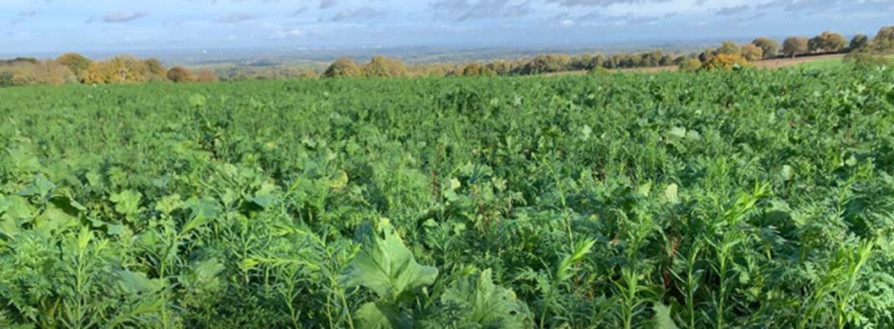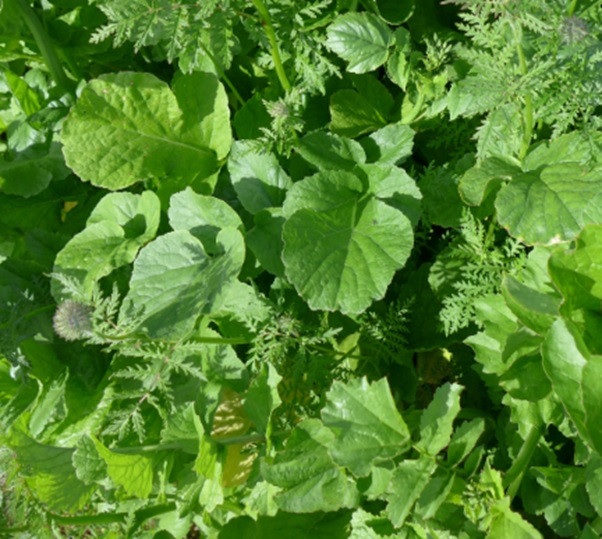What's all this talk about winter cover crops?
Some of you will be familiar with the use of winter cover crops and may drill them already, but for those of you still with bare land or contemplating them for the first time, there is still an opportunity to bring them into the rotation. With the recent hotter temperatures helping many areas to retain warm soils, conditions are favourable for drilling too, meaning cover could soon be bringing a host of benefits to your farm.
Why cover crops?
A good winter cover provides many benefits which are often translated into improved yield for the following crop.
They are a great way to protect the soil surface from the harsher conditions over winter, helping to reduce the risk of run off and soil erosion. The roots from cover crops can also open up more space in soils for water, air, nutrients and decaying biological matter. On light land, they aid moisture retention whereas on heavier soils they can help to draw excess moisture out. Good cover crops will also create humus in soils and have been shown to increase earthworm numbers.
As well as the agronomic benefits they provide, some cover crop species are a great option for grazing which can form part of a wider integrated farm management approach. They can be tied to wider agri-environment schemes too, meaning growers can be rewarded for including them as part of the overall farm rotation.
Think about the purpose of your cover crops
Drilling a cover crop straight after harvest into the stubble is the ideal time to get a leafy biomass or an option with good deep-rooted structure established. Before that though, it can be a good idea to carry out some soil sampling to assess the post-harvest conditions you're dealing with.
Using the precision mapping services from our colleagues at SOYL can be a great starting point for identifying varying soil types and any structural issues you may have on farm. Knowing what's really going on beneath the surface will then help you plan where and how cover crops best fit into your rotation, as well as the species best suited to your scenario. It's important to think about what it is you're trying to achieve too – for example:
- Is it all about improving soil health?
- Are you looking for a solution that supports grassweed management?
- Will the cover crops provide additional grazing for livestock?
- Are they being incorporated as part of a stewardship/environmental land management scheme?
Knowing your answers to the above can then help determine appropriate species selection.
At this time in the season, some of you may be thinking about cover crops following your maize, potato or sugar beet harvest. As we approach the typical time for maize harvest as the month progresses, if you're growing the crop it's an opportune time to assess any challenges you may face in terms of maintaining soil health following any loss of organic matter or soil compaction. These factors can lead to reduced soil fertility and therefore reduced yields for any following crop so it could be that a winter cover crop is a good option for filling that gap beforehand.
Options to consider after maize may be our Forage and Radish Mix or the Post-Maize Grazer, which contains forage rye, juniper rape and oil radish. Alternatively, you could consider an oat and phacelia mix. More information about these options and other species can be found in the Kings Environmental Land Management and Specialist Crops Catalogue.
Opportunities with the Sustainable Farming Incentive
The use of cover crops can be a rewarding activity in more ways than one. Given its inclusion in one of the Sustainable Farming Incentive's (SFI) new actions, where growers can be paid £129/ha/year for the establishment of a multispecies winter cover (SAM2), it's one which I believe should be strongly considered.
The aim of this SFI action is to get a well-established multispecies cover crop in over the winter months of December, January, and February. To meet the option criteria, you would need to sow at least two species from one or more of these plant families: brassica, legumes, grass or cereals and herbs.
You can read more about the benefits of winter cover crops in this case study with farm manager, Andy Bason, of the Newhouse Farm Partnership in Hampshire. For more advice, speak to your local Kings advisor or get in touch with the team.
As a subscriber, you’ll receive email alerts each time a new blog is published so you can always stay updated with the latest advice and insights from our experts






Comments